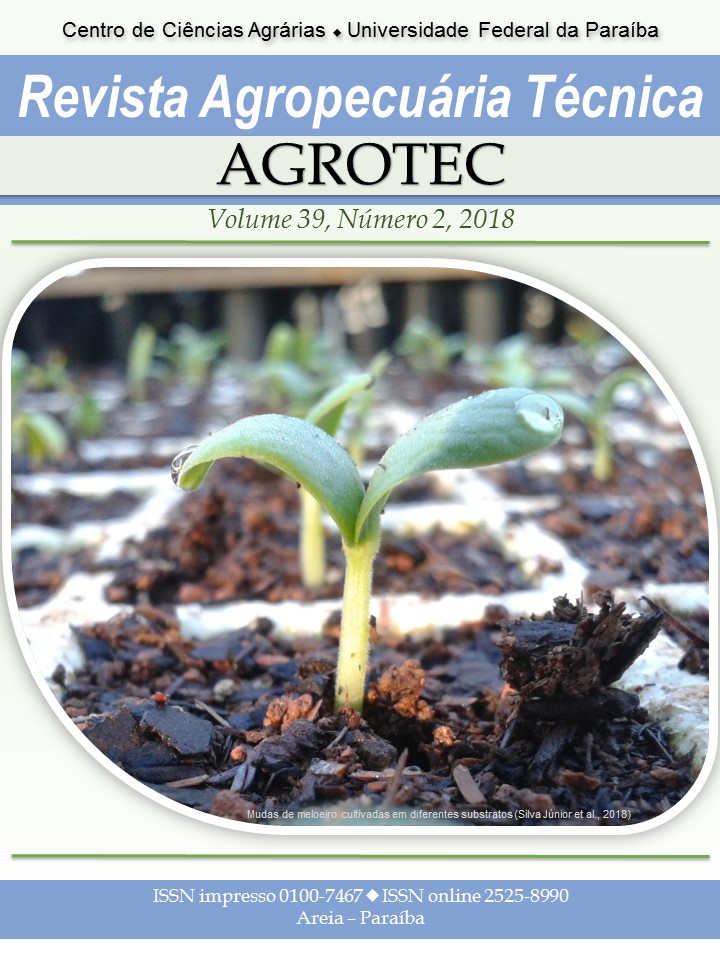Macrofauna edáfica em cultivo de palma forrageira no período seco e chuvoso no Seridó Potiguar
DOI:
https://doi.org/10.25066/agrotec.v39i2.39148Palavras-chave:
Sazonalidade, Fauna do solo, Nopalea cocholenifera, Cultivo de xerófilasResumo
A macrofauna do solo constitui-se em uma eficaz ferramenta de bioindicação da qualidade edáfica em áreas cultivas, inclusive com palma forrageira, que pela sua adaptabilidade caracteriza-se como elemento biológico compatível às condições semiáridas. Neste contexto, objetivou-se caracterizar a macrofauna edáfica em cultivo de Nopalea cocholenifera Salm Dyck em diferentes épocas no Seridó Potiguar. A pesquisa foi conduzida na EMPARN, município de Cruzeta, estado do Rio Grande do Norte, Brasil, de dezembro de 2016 a janeiro de 2017 (Época seca) e de março a abril de 2017 (Época chuvosa). O experimento foi realizado em delineamento inteiramente casualizado com cinco repetições. Utilizaram-se armadilhas do tipo Provid, enterradas aleatoriamente na área de modo que as aberturas situassem - se ao nível da superfície do solo durante quatro semanas. As coletas foram realizadas semanalmente em cinco pontos da área para cada época. Após a quantificação dos indivíduos, calculou-se a riqueza pelo número de ordens, os índices de frequência, abundância, dominância e constância utilizando o software ANAFAU e também os índices de diversidade de Shannon (H) e uniformidade de Pielou (e). No somatório das coletas identificaram-se 4.160 indivíduos na época da estiagem, distribuídos em dez ordens e na época chuvosa obtiveram-se 1.779 pertencentes a quinze ordens. Constatou-se que a macrofauna no cultivo de palma forrageira é mais abundante na época da estiagem, entretanto é mais diversa na época chuvosa.


